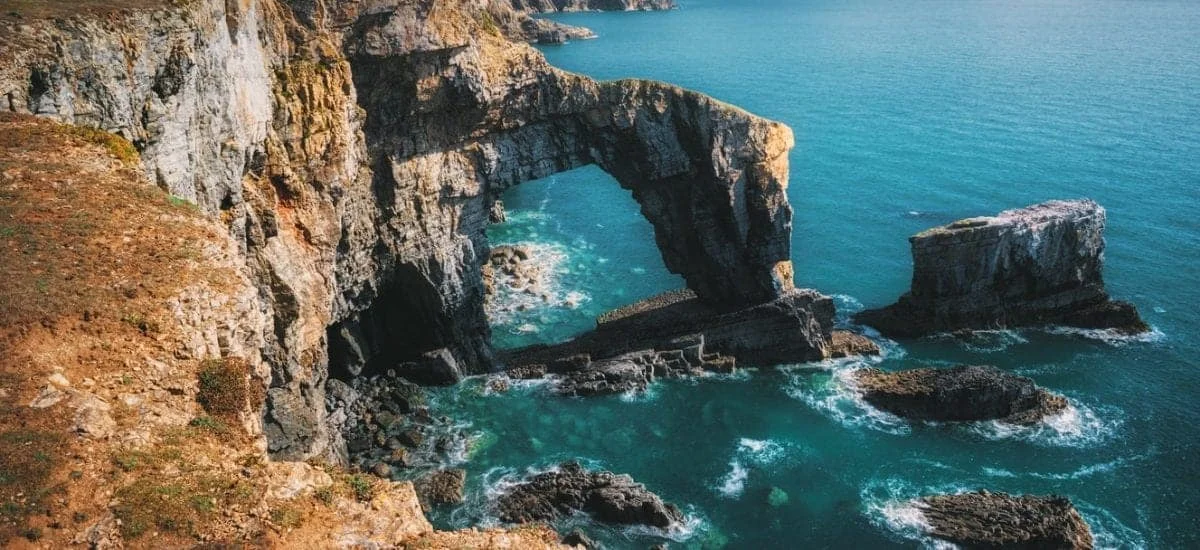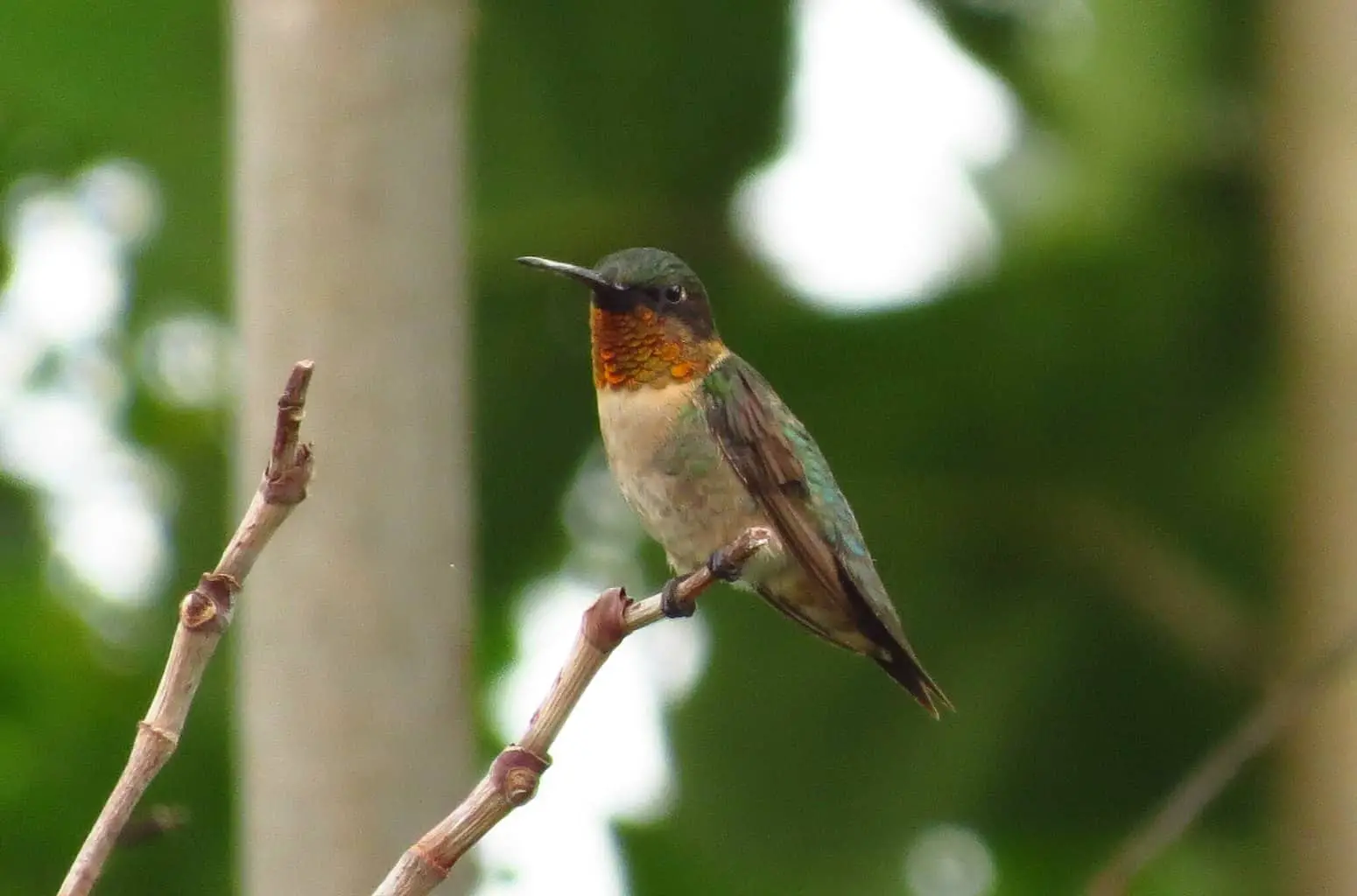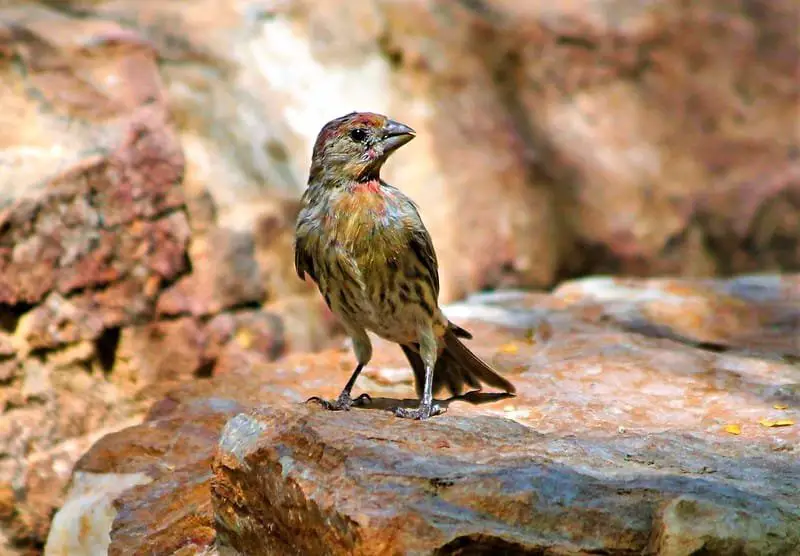
The best bird watching locations in Wales are located across all four corners. Skomer island is a famous island for bird watching in West Wales where thousands of Puiffins flock to every year. The Valley and South Stack nature reserves are beautiful locations on Angelsey island in North Wales while there are many more to visit in mid-Wales!
Wales is a beautiful country in the United Kingdom. The country is bordered to the east by England, to the north and west by the Irish Sea, and the south by the Bristol Channel. The country features more than 1,680 miles of stunning coastline and is covered with vast rural land and majestic mountains to the north. This habitat has cultivated a diverse and rich Eco-system where wildlife thrives. There is no species of animals, in Wales, that is more diverse and numerous than birds. Famous for the Red Kite, you can also spot, buzzards, puffins, razorbills, fulmars, guillemots, and many more. Follow this article to hear about some of the best places to go for bird-watching in Wales.
WHAT IS THE BEST BIRD WATCHING LOCATION IN Wales?
1. Skomer Island National Nature Reserve
This nature reserve can be found on an island located off the coast of Pembrokeshire in South West Wales. The island is about 60 meters above the sea level and therefore all of its coasts are staggering steep sea cliffs. The island is covered with beautiful wildflowers and jaggery streams.
Nearby, the island of Skokholm is Skomer’s smaller sibling. Between both islands, you can find numerous sea birds that include Manx Shearwaters, Razorbills, Guillemots, Cormorants, European Storm-Petrels, Common Shags, Puffins, and Oystercatchers.
One of the main attractions of the island is that it’s a breeding area for Manx Shearwaters. We recommend staying overnight on Skomer as these birds will be out at sea until dusk. They will return shortly before returning to sea in dawn to hunt for their favorite fish – sardines. The birds often nests in rabbit holes and will return to the same nests every year. They migrate down to South Africa in July where they stay for the winter before returning in late February. The reason why they return to Skomer in great numbers is that they can raise their young without having to worry about ground predators.
Another attraction of Skomer is the Puffins. About 20,000 Puffins migrate to the Skomer island each year and they arrive around April. Puffins also nest in the various rabbit burrows on the islands just like Manx Shearwaters. The most interesting thing about the puffins is that they seem unfazed by human visitors which gives the tourist the chance to take memorable up-close pictures. Early in the morning, they are seen taking food into their burrows – they love small fish and sand eels! The Puffins depart from the island by the end of July until the following year.
Some of the birds of prey that you can find on the island are Kestrels, Buzzards, Owls, and Peregrin Falcons. The island has large areas of flat and open land which makes for perfect conditions for birds of prey to spot smaller animals.
Some of the smaller birds that you can spot on Skomer are Pied Wagtails, Dunnocks, Reed Buntings, common Whitethroats, blackbirds, wrens, Shelducks, Common Teal, Gadwalls, Shovelers, Tufted Ducks, Moorhens, Coots, Mallards, Skylark.
2. Newport Wetlands National Nature Reserve
Newport is located in the South of Wales, about a 30 minute drive from the capital city, Cardiff. The Gwent Levels covers the coastline to the South of Newport. It offers a diverse habitat home to many animals. Mainly comprised of floodplains, salt marshes, and mudflats, it is spread across 57 square kilometers of coastline.
You will find a wide range of beautiful plants like the Rootless Duckweed. You can head to the Sites of Special Scientific Interest (SSSI) where you will find more plants like the Arrowhead, the Reens, Blunt-flowered Rush, and Flowering Rush, aquatic liverworts.
The main attraction at the Newport Wetlands National Nature Reserve is its birds. There are four major habitats that you can visit for bird-spotting activities. You can head to the reedbeds, the wet grassland areas, the saltmarsh and mudflats, and the saline lagoons. There are also several small areas of woodland where you can explore through the Woodland and Estuary Trail that links with other trails – starting from the visitor center.
In the expansive reedbeds you are going to spot birds like Bearded Tits, Cetti’s Warblers, Water Rails, and Warblers. The pools in this area also house Mute Swans, Tufted Ducks, Little grebes, and Coots. The saline Lagoons in the nature reserve is considered to be the only breeding location in Wales for Avocets and other species such as Lapwings, Redshanks, Oystercatchers, Little Ringed Plovers, and Ringed Plovers. You are also going to find over 20 species of migrating waders in the area.
The wet grassland habitat is the place to go if you want to see large numbers of wildfowl and waders. You can spot flocks of Lapwings, Wigeon, Black-tailed Godwits, and Shovelers in large numbers. In the spring, you can catch a glimpse of Lapwings as they breed in the grasslands while you can hear as Skylarks sing overhead. The Saltmarsh and Mudflats in the Newport Wetlands are popularly known for the Dunlins that visit the reserve.
3. Valley Wetlands RSPB Nature Reserve
The Valley Wetlands is situated on the beautiful island of Anglesey. Located in the north of wales it only a stone throws away from Bangor. Comprised of two SSSIs it has a staggering 20 hectares of the reed as is one of the most important wildlife areas in Wales. The surrounding marshes create diverse wildlife consisting of birds, plants, and invertebrates.
The Valley Wetlands offers something to see all year round.
If you visit in winter if you might see birds such as the Goldeneyes and Widgeon. If you visit in the summer you will find Reed Warblers and Sedge Warblers. Some of the birds that breed at the Valley Wetlands during the summer are Tufted Ducks, Shovelers, Pochards, Little Grebes, and Gadwalls.
If you are lucky, you are going to spot Marsh Harrier and some other special birds like Water Rails and Cetti’s Warblers. There are also many species of plants that thrive here due to the diverse habitats. The Valley Wetlands nature reserve houses some unusual species like a flowering rush, eight-stamened waterwort, marsh fern, and hop sedge
4. Cors Caron National Nature Reserve
Located in Ceredigion, Mid-Wales, Cors Caron is located close to the town of Tregaron. Best accessed by a train to the local town of Aberystwyth and then a bus to Tregaron if you do not have a car. ‘Cors’ is the welsh word for bog and it is no surprise as Cors Caron has three raised bogs that have been built up from deep peat from the last 12000 years!
It has a unique blend of habitats that include reedbeds, wet grasslands, woodlands, and rivers. It is known for its beautifully colored landscapes that change between green, brown, orange and yellow depending on which time of year you choose to visit.
The Cors Caron National Nature Reserve is popularly known as a winter birding site. The reserve receives more than 170 bird species with over 40 birds migrating here for breeding. Some of the commonly found birds are Common Teal, Water Rails, Snipe, Mallard, Redstarts, Curlew, Meadow Pipits. You are also going to hear the cuckoos here early in the summer.
The reserve is not only popular for its birds. Many varieties of plants such as Purple-loosestrife, Bog Asphodel, Marsh Cinquefoil, Heath Spotted-orchids, Sundew, and Bogbean call Cors Caron their home.
There are three trails in Cors Caron that will keep you busy all day. There are 12 miles of twisting track that will take you through the diverse habitats is a great day out for all!
5. South Stack Cliffs RSPB Nature Reserve
Located on the island of Anglesey this is a stunning reserve that consists of heathland and farmland. Its most iconic attraction is the dramatic cliffs of South stack.
It is best if you visit this reserve early in the morning to see a wide range of sea birds. Some of the birds here are seasonal and you should note that some of them migrate by the end of July. Some of the first birds to migrate from here are Razorbills, Guillemots, and Puffins. You are also going to spot Chough throughout the reserve which is a very rare species of crow that lives in the UK. The South Stack reserve attracts the Chough because they can forage for food and they live here all year round. You can also spot the majestic Peregrine Falcon from these windy cliffs.
If you are interested in plants, you are going to find varieties of uncommon species here. Scattered throughout the park are rockrose, mauve spring squill, white common Scurvygrass, yellow and orange Kidney Vetch, Devil’s-bit Scabious, Heath Spotted-orchid, and pink Bog Pimpernel, and so on.
6. Cors Dyfi
Cors Dyfi is located beside the town of Machynlleth, it was used to be a tree plantation and farmland years ago. It is now a wildlife habitat as it features bog, swamp, wet woodland with native trees, and scrubland. The area is now getting more and more popular for its bird watching. The area also features varieties of plant life such as Marsh Cinquefoil, Royal Fern, Loosestrife, Lesser Spearwort, and Bog Myrtle.
It is best to come here early in the morning. The Ospreys are often spotted breeding around the River Dyfi. They can then be seen flying back and forth to their nest throughout the day. Some of the other birds that you are going to find here are Warblers, Nightjars, Green Woodpeckers, Peregrine Falcons, Hen Harriers, and Red Kites.
You can find the elsuive Green Woodpeckers here which are very rare in Wales. If you have some interest in mammals, you are going to see Otters and Dormice at the reserve.

More Articles.

Hummingbirds in Texas (17 Species with Pictures)
In Texas you may come across 17 different species of hummingbird. These are: Mexican Violetear

Hawks in California (13 Species with Pictures)
California is a state in the western United States, reaching from the border of Mexico

What is that Brown bird at my feeder? (Pictures and Sounds)
Birdfeeders in North America attract a wonderful variation of little brown birds. There are, in

About Us
We are avid bird-watchers who recently retired, allowing us more time to travel the world. Fortunately, we have managed to visit numerous countries around Europe, Asia, and America. Watching and photographing birds has been a passion for many years and we are making the most of the extra time on our hands!
